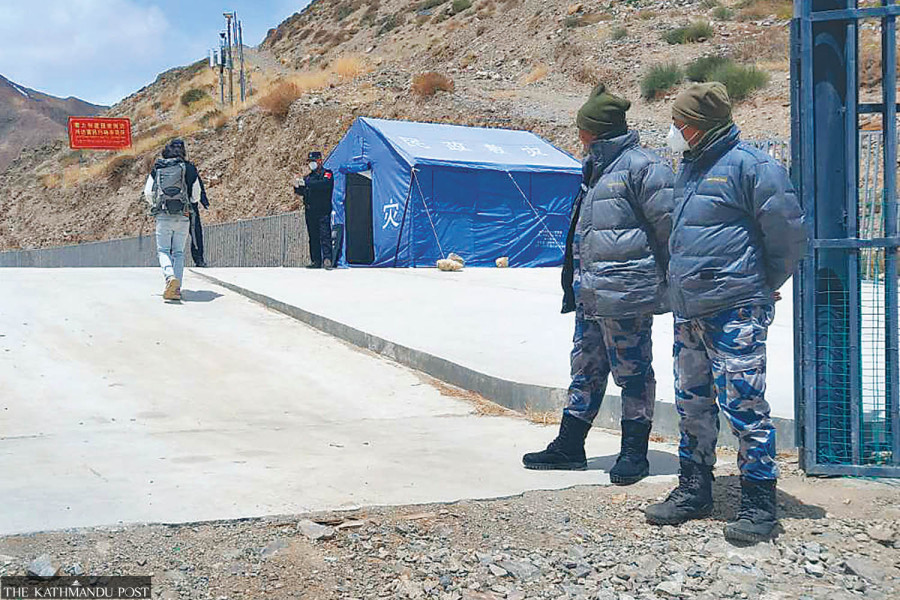Money
Kailash-Manasarovar Yatra: Tourism industry fears wipeout this year too
Beijing denied nearly 50,000 Indian pilgrims access to the pilgrimage site in Tibet. No signs of new permits.
Krishna Gautam
After Beijing opened the Hilsa border point, the gateway to Kailash Manasarovar in Tibet, China, last April, Bijay Lama, a hotel entrepreneur, thought the worst was over.
He was happy and hopeful for a good business as the border had been opened after three years.
But when the Tibetan authorities restricted Indian pilgrims’ movement through the border, his hope turned to despair.
Last year, like Lama, many entrepreneurs were forced to close, leaving many people unemployed.
Lama is not optimistic this year either.
Even after Beijing reopened some border points to Nepal allowing people and trade movement, it has imposed restrictions, especially for Indian pilgrims, which many say is the fallout of the growing India-China geopolitical rivalry.
The restriction dashed hopes of thousands of Indians to visit the highly revered pilgrimage site.
In Nepal, it ruined the million-dollar business of scores of hotels, tour operators, porters, helicopter and airline companies.
Around 15,000 tourists used to visit Kailash Manasarovar through the Hilsa border before the Covid pandemic.
The border was closed for four years due to the pandemic and reopened in April last year.
The Manasoravor pilgrimage season starts in April and lasts until October. Mid-June to early September is monsoon season in Tibet, but it is the peak season and the most expensive period to travel there.
Kailash Manasarovar Yatra is one of the most lucrative tour packages for Nepali tour operators.
The annual pilgrimage season would be a boom time for the tourism industry, and the government too would see an increased revenue from taxes. The religious travellers would fill the hotels and restaurants, and keep travel agents, airlines, guides and porters busy.
“We are expecting our business to be zero this year too. There is no sign of opening the border even as the season is to start after a week,” said Lama.
Hilsa is the major point on the way to Kailash Manasarovar.
Travellers flying from Nepalgunj to Simkot and onwards to Hilsa and then journeying overland to Kailash Manasarovar pay IRs225,000 each.
There are 35 hotels in Hilsa with investments ranging from Rs1 million to Rs20 million.
Hilsa, currently, is blanketed in around 3 feet of snow. The traders normally migrate to the lowlands during the winter.
Before the Covid pandemic, there used to be a huge movement of Indian tourists on the Hilsa border, said Karma Lama, another tourism entrepreneur. “As a result, from porters to hotel operators and from airlines to local groceries used to be busy from early morning,” he said.
“We incurred heavy losses when the border was closed. But despite the reopening last year, the tourist movement has been almost zero,” Lama said.
Tour operators said Tibetan authorities denied access to nearly 50,000 Indian pilgrims who had booked for the Kailash Manasarovar Yatra that included journeying through different border points, including the Kathmandu-Lhasa flight.
As Indians had booked the package, they were forced to visit Nepal’s holy places like Muktinath and Lumbini on the same package, at least three tour operators specialising in the Kailash Manasarovar Yatra package told the Post in a recent interview.
In 2023, Nepal welcomed an all-time high number of Indian visitors, crossing the 300,000 mark for the first time. The major draw was the Kailash Manasarovar Yatra.
Yakyung Lama, a guard at Manasarovar Hotel in Hilsa, said he has been deployed to look after the hotel alone as there are no visitors.
The Nepalgunj-Simkot-Hilsa-Manasarovar route is the shortest, and the itinerary is affordable and easy. Travellers usually fly from Nepalgunj to Simkot by fixed-wing aircraft and then take a helicopter to Hilsa on the border with Tibet, China.
There used to be 150 helicopter movements daily from Simkot to Hilsa before the Covid pandemic.
As Nepalgunj has become a major gateway, more than a dozen luxury hotels have sprung up here to cater to Indian visitors.
After crossing Karnali, pilgrims are taken by motor vehicles to China. Due to the high altitude, pilgrims acclimatise for one to two days in Purang, also known as Taklakot—the first city in Tibet. Lake Manasarovar lies at an elevation of 4,556 metres.
“Until China allows Indian pilgrims, there is little likelihood of tourists returning and business bouncing back,” said Lama, the guard.
“It’s snowing heavily. There are no guests. The Armed Police Force comes to patrol the area,” he said.
The temperature in Hilsa currently is minus 17 degrees, he said.
There are around 100 households, including hotels in Hilsa. The border immigration, customs, and police checkposts have been shifted to Simkot.
Three years ago, a border outpost of the Armed Police Force was established in Hilsa.
Nyalu and Nara, nearby places from Hilsa, are under 3 feet of snow due to which the movement of locals from Limi Valley in ward 6 of Namkha Rural Municipality has also been halted, said Paljor Tamang, the ward chair.
The locals of nearly 147 households of Halji and Jang of Limi and Til village have migrated to the lower belt.
“Due to the heavy snowfall, the road to headquarters has become impassable,” Tamang said. The locals will return to the village in April, he added.




 7.12°C Kathmandu
7.12°C Kathmandu















